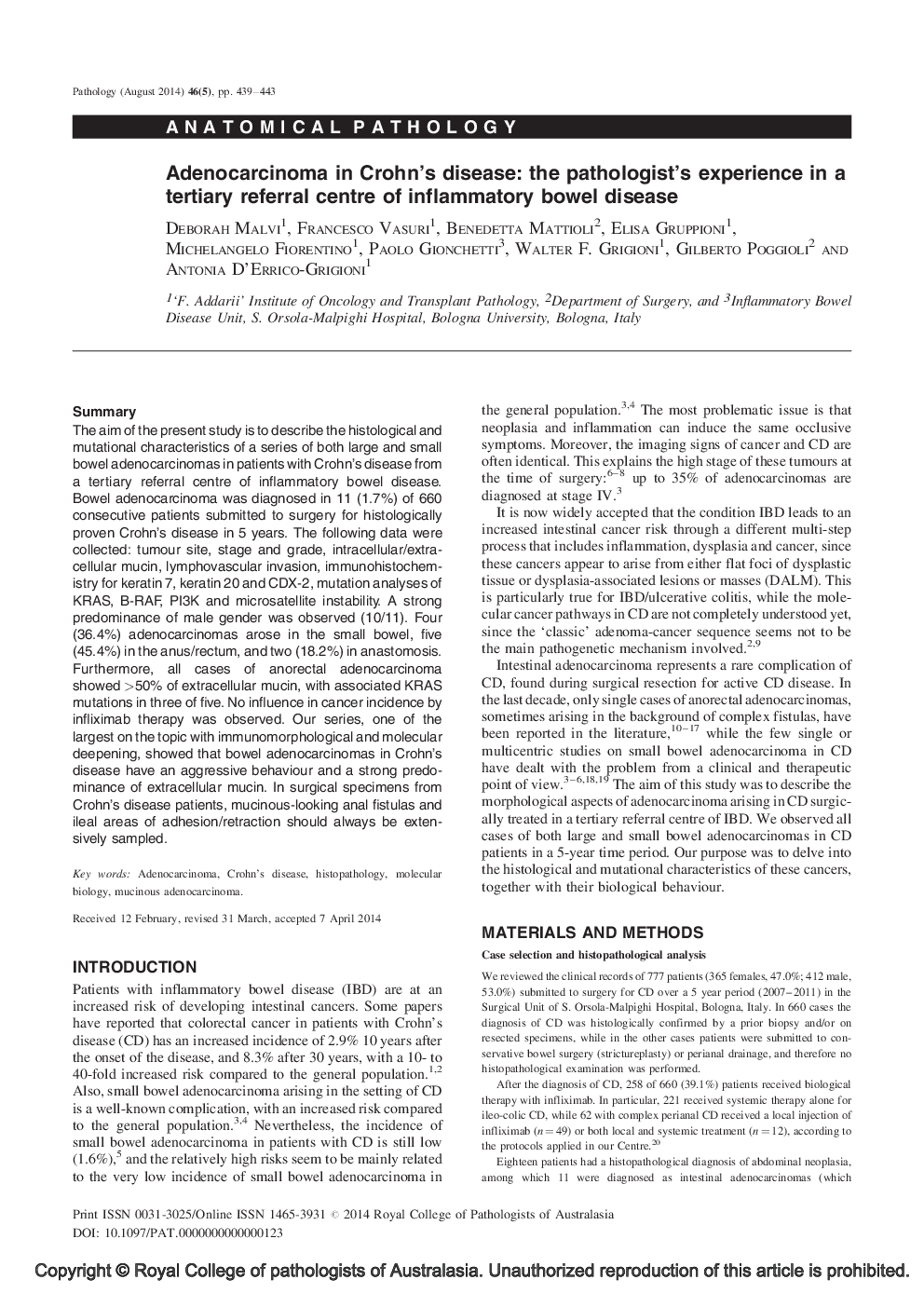| Article ID | Journal | Published Year | Pages | File Type |
|---|---|---|---|---|
| 104720 | Pathology | 2014 | 5 Pages |
SummaryThe aim of the present study is to describe the histological and mutational characteristics of a series of both large and small bowel adenocarcinomas in patients with Crohn’s disease from a tertiary referral centre of inflammatory bowel disease. Bowel adenocarcinoma was diagnosed in 11 (1.7%) of 660 consecutive patients submitted to surgery for histologically proven Crohn’s disease in 5 years. The following data were collected: tumour site, stage and grade, intracellular/extra-cellular mucin, lymphovascular invasion, immunohistochem-istry for keratin 7, keratin 20 and CDX-2, mutation analyses of KRAS, B-RAF, PI3K and microsatellite instability. A strong predominance of male gender was observed (10/11). Four (36.4%) adenocarcinomas arose in the small bowel, five (45.4%) in the anus/rectum, and two (18.2%) in anastomosis. Furthermore, all cases of anorectal adenocarcinoma showed >50% of extracellular mucin, with associated KRAS mutations in three of five. No influence in cancer incidence by infliximab therapy was observed. Our series, one of the largest on the topic with immunomorphological and molecular deepening, showed that bowel adenocarcinomas in Crohn’s disease have an aggressive behaviour and a strong predominance of extracellular mucin. In surgical specimens from Crohn’s disease patients, mucinous-looking anal fistulas and ileal areas of adhesion/retraction should always be extensively sampled.
